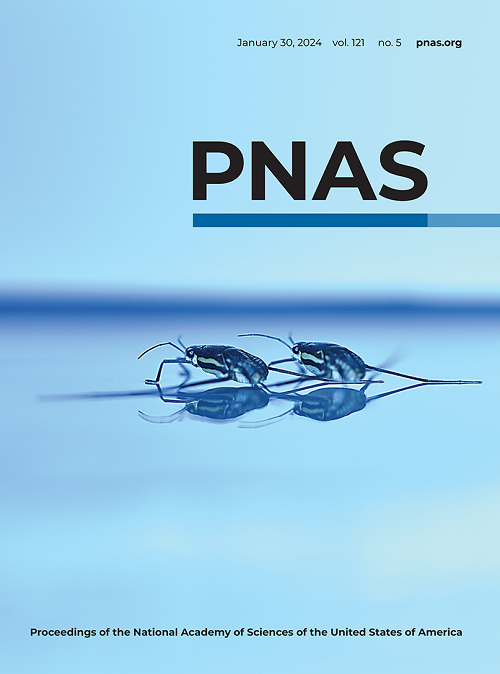啮齿类动物内侧前额叶皮层中的斜坡细胞通过实拉普拉斯变换对过去和未来事件的时间进行编码。
IF 9.4
1区 综合性期刊
Q1 MULTIDISCIPLINARY SCIENCES
Proceedings of the National Academy of Sciences of the United States of America
Pub Date : 2024-09-10
DOI:10.1073/pnas.2404169121
引用次数: 0
摘要
在间隔再现任务中,动物必须记住开始间隔的事件,并预测计划反应的时间以终止间隔。因此,间隔再现任务既可以研究对过去的记忆,也可以研究对未来的预测。我们分析了之前发表的啮齿动物内侧前额叶皮层在时间间隔再现任务中的记录[J. Henke et al., eLife10, e71612 (2021)],并通过使用分层贝叶斯模型对其时间感受野进行建模,确定了两个细胞群。过去细胞 "组的点燃在间歇开始时达到峰值,然后以指数形式放松回到基线。而 "未来细胞 "组的点燃呈指数增长,并在间隔结束时计划行动之前达到峰值。与以往认为大脑中的定时信息在给定时间间隔内有一个或两个时间尺度的假设相反,我们发现了强有力的证据,证明过去和未来细胞群的指数速率常数呈连续分布。时间的实际拉普拉斯变换预示着整个群体的指数发射率常数呈连续分布。因此,过去细胞的点火模式可以用过去事件发生后时间的拉普拉斯变换来确定,而未来细胞的点火模式可以用计划未来事件发生前时间的拉普拉斯变换来确定。本文章由计算机程序翻译,如有差异,请以英文原文为准。
Ramping cells in the rodent medial prefrontal cortex encode time to past and future events via real Laplace transform.
In interval reproduction tasks, animals must remember the event starting the interval and anticipate the time of the planned response to terminate the interval. The interval reproduction task thus allows for studying both memory for the past and anticipation of the future. We analyzed previously published recordings from the rodent medial prefrontal cortex [J. Henke et al., eLife10, e71612 (2021)] during an interval reproduction task and identified two cell groups by modeling their temporal receptive fields using hierarchical Bayesian models. The firing in the "past cells" group peaked at the start of the interval and relaxed exponentially back to baseline. The firing in the "future cells" group increased exponentially and peaked right before the planned action at the end of the interval. Contrary to the previous assumption that timing information in the brain has one or two time scales for a given interval, we found strong evidence for a continuous distribution of the exponential rate constants for both past and future cell populations. The real Laplace transformation of time predicts exponential firing with a continuous distribution of rate constants across the population. Therefore, the firing pattern of the past cells can be identified with the Laplace transform of time since the past event while the firing pattern of the future cells can be identified with the Laplace transform of time until the planned future event.
求助全文
通过发布文献求助,成功后即可免费获取论文全文。
去求助
来源期刊
CiteScore
19.00
自引率
0.90%
发文量
3575
审稿时长
2.5 months
期刊介绍:
The Proceedings of the National Academy of Sciences (PNAS), a peer-reviewed journal of the National Academy of Sciences (NAS), serves as an authoritative source for high-impact, original research across the biological, physical, and social sciences. With a global scope, the journal welcomes submissions from researchers worldwide, making it an inclusive platform for advancing scientific knowledge.

 求助内容:
求助内容: 应助结果提醒方式:
应助结果提醒方式:


